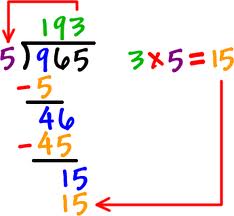Immoral Afternoons

Good advice.
I used to work for a CEO who had one hard and fast rule when it came to making decisions: he wouldn’t make any important decisions after 2:00 in the afternoon. I used to think it was an odd and unnecessary rule … but then I started counting calories.
My little food diary app keeps track of what I eat and lets me know if I’m getting too much of this or not enough of that. It’s interesting to keep track of what I consume. But what really surprised me was not what I eat so much as when I eat. I eat a well-balanced, healthy diet throughout the day. Then, around 7:00 at night, all hell breaks loose. On a typical day, I eat roughly 50% of my calories between 7:00 and 10:00 at night. If I went to bed at 7:00 pm, I’d be much healthier.
My experience reminded me of Daniel Kahneman’s story about the Israeli parole board. The default decision in any such hearing is to deny parole. To permit parole, the board has to find information that would point toward a positive outcome. In other words, it’s easy to deny parole. It takes more work – sometimes quite a bit more work – to grant parole.
Kahneman reports on a study that tracked parole decisions by time of day. Prisoners whose cases were considered just after lunch were more likely to win parole than those whose cases were considered before lunch. It all has to do with energy. Our brains consume huge amounts of energy. Making difficult decisions requires even more energy. Just before lunch, members of the parole board don’t have much energy. Just after lunch they do. So before lunch, they’re more likely to make the default decision. After lunch, they’re more capable of making the more laborious decision.
Energy doesn’t just affect decision making. It also affects will power (which, of course, is a form of decision making). When our bodies have sufficient stores of energy, we also have more will power. Why do I eat so many calories after 7:00 pm? Perhaps because my energy stores are at a low and, therefore, my will power is also at a low. It might be smarter to spread my calories more evenly throughout the day so my energy – and will power – don’t ebb.
Energy also affects ethics. A research study published in last month’s edition of Psychological Science is titled, “The Morning Morality Effect”. The researchers, Maryam Kouchaki and Isaac Smith, ran four experiments and found that people “… engaged in less unethical behavior … on tasks performed in the morning than in the same tasks performed in the afternoon.” In fact, “people were 20% to 50% more likely to lie, cheat, or otherwise be dishonest in the afternoon than in the morning.”
What’s the common denominator here? Energy depletion. As the day wears on and our energy levels drop, we’re less able to make complicated decisions or resist temptation. The parole board example suggests that we can combat this to some degree simply by eating. I wonder if taking a nap might also help – though I haven’t seen any research evidence of this.
Bottom line: my old boss was right. Make the tough decisions in the morning. Take it easy in the afternoon.
Hawthorne, Heisenberg, and Me

I’m watching you.
Suellen bought me one of those activity-tracking wristbands for my birthday. It keeps track of what I do — including how much time I spend sitting around, how often I’m up and about, how many steps I take, how long I sleep, (including light sleep versus deep sleep), and so on. It will even beep if I sit still too long. It’s telling me to get up, move around, and keep my blood from pooling.
It also calculates how many calories I’ve burned and consumed each day. The system has a good database of foods that I can pick from (or add to). I can, for instance, pick chicken sandwich from the database and learn that I’ve consumed 252 calories, 26 grams of carbs, 20 grams of protein, 466 milligrams of sodium, and 47 milligrams of cholesterol.
I always thought that I kept close tabs on my diet. But the activity tracker delivers much closer scrutiny. I’ve learned a lot about sodium and cholesterol, for instance. I’ve also learned that a glass of red wine has 130 calories while a glass of bourbon has only 50. That’s useful knowledge.
I’ve also re-learned an old lesson: if you observe something, it changes. Simply observing what I eat has changed what I eat. I can ask myself, “I’ve eaten how many calories today? Do I really need that third cheeseburger?”
I’m certainly not the first one to observe this effect. In social science, it’s known as the Hawthorne Effect and derives from experiments in the 1920s at the Hawthorne Works, a Western Electric factory near Chicago. It was the early days of industrial engineering and researchers wanted to know if lighting levels would affect productivity. The researchers measured productivity at an initial level of illumination. Then they improved the illumination and noted that productivity increased. They improved illumination again and productivity improved again. Each time the researchers improved illumination productivity improved.
So, we can conclude that better lighting yields better productivity, correct? Well, not so fast. At the end of the trials, the researchers returned the illumination to its initial level and … productivity improved yet again. The researchers weren’t measuring the effects of illumination at all. They were measuring the effects of observation. When observed, the workers changed their behavior. Perhaps they enjoyed the attention. Perhaps they were angling for a raise. But the mere fact that they were observed, changed their behavior.
In physics, the same (general) phenomenon is known as the Heisenberg Uncertainty Principle. In 1927, Werner Heisenberg stated the basic principle: you can know a subatomic particle’s position or you can know its momentum but you can’t know both. The more certain you are of one, the more uncertain you are of the other. Why can’t you know both? Because of the “… jolt-like disturbance triggered by the act of observation.” If you observe a subatomic particle, it changes its behavior. (Since Heisenberg’s time, the effect has been found in many physical systems and it’s generally known as the observer effect).
We can see similar effects in everyday life. If I don’t know that you’re taking my picture, I’ll behave one way. If I do know, I’ll behave another way (and show you my best side). If I don’t know that a policeman is around, I’ll behave one way. If I do know, I’ll behave another way (most likely).
It’s also a good management principle to keep in mind. A process that’s observed will change its behavior. The more closely you observe, the greater the change. If you want to change something, whether it’s your diet or factory productivity, just pay attention.
Good For Bad

Rust never sleeps.
In The Magic Mountain, young Hans Castorp travels up the mountain to visit his cousin, Joachim, who is recuperating in a tuberculosis sanatorium. Joachim’s doctor tells Hans that — with its crisp, thin, dry air — the mountain is good for tuberculosis.
Hans enjoys the cosmopolitan crowd that inhabits the sanatorium and dallies a bit too long. He contracts tuberculosis himself. Dismayed, he consults with the doctor again. The doctor is nonplussed. “But I told you”, he says, “that the mountain is good for tuberculosis”.
Slice an apple in half and you’ll see the results of oxidation. The newly exposed flesh turns brown and dries out quickly as it oxidizes. If you rub lemon juice on the apple, however, the flesh stays moist and firm. The juice prevents oxidation.
Oxidation is essentially rust. Just as I don’t like rust on my bicycle, I don’t like it in my body either. I keep my bike well lubricated and I try to do the same for my body. Antioxidants help prevent rust in my body. That’s a good thing, right?
Like the magic mountain, however, antioxidants can be good for bad things as well. Science reports on a Swedish study that finds that “moderate doses of two widely used antioxidants spur the growth of early lung tumors in mice.” I’ve always viewed antioxidants as good for good things. It may be that they’re good for bad things as well. Cancer may not like rust any more than the rest of us do.
Recently we’ve seen a furor in the United States about the government spying on citizens. I believe that restricting the government’s ability to spy on us is a good program. Privacy is a valuable right and we should protect it. Those same restrictions, however, could be good for terrorists who want to attack us. In other words, restrictions of government spying could be good for bad things as well.
When the cure causes the disease, medical researchers call it iatrogenic. When a good program causes bad things to happen, we may refer to them as unintended consequences or, more recently, collateral damage.
I suspect that good programs promote bad things (as well as good things) more often than we think. The trick is to get the balance right, to create remedies and cures that promote maximal goodness and minimal badness. As we make our decisions, however, we need to remember that no program, no matter how well conceived, will promote only good. Unintended consequences will always be with us. We need to account for them. As Neil Young taught us, rust never sleeps.
Meaningless Means

Quick. What’s the mean?
Does your grade point average mean anything? To answer that question, let’s ask another one. Is this true or false?
The distance between 78 and 79 is the same as the distance between 96 and 97.
It may seem like a simple answer but it’s actually rather subtle. As with all good questions, the answer is “It depends”.
Let’s say that you’re measuring a distance in meters. You’re standing at meter zero. On a straight line, Object A is 78 meters away from you, Object B is 79 meters away, Object C is 96, and Object D is 97. Is the distance between Object A and B the same as the distance between Objects C and D?
Well, yes it is. After all a meter is a meter. A meter has a standard, universal definition. In fact, it’s one ten-millionth of the distance from the North Pole to the equator, on an arc passing through Paris*. (Those pesky French defined it). Because we have a standard and objective way of measuring a meter, we can safely conclude that the distance between A and B is the same as that between C and D.
Let’s look at a different example: ice dancing in the Olympics. The winners receive Gold, Silver, and Bronze medals. Is the distance between Bronze and Silver the same as the distance between Silver and Gold? Well, no. For one thing, we don’t have a standard, objective way to measure. Judging ice dancing is subjective. The Russian and American judges may well have different points of view.
Additionally, most athletes would say that improving performance becomes increasingly difficult the closer you get to the top. Let’s say that you can run a mile in ten minutes. You work hard, improve your speed, and get your time down to nine minutes. (Congratulations). Let’s compare your level of effort to Mary who runs a six-minute mile and improves her time to five minutes. You’ve shaved a minute off your time and she’s shaved a minute off her time but, really, who has to work harder? I think we’d all agree that it’s Mary. So, the distance between ten minutes and nine minutes is not the same as that between six minutes and five.
Now, let’s calculate some means. Let’s say we have three buildings. One is 30 meters tall, the second is 60, and the third is 70. What’s the mean? We add up the numbers (160) and divide by the number of numbers (3) and find that the mean is 53.3 meters. Does that make sense? Sure it does, because we have a standard, objective way to measure a meter and the points on the scale are equidistant.
Let’s do the same for ice dancing medals. We’ll give three points to a gold medal, two to a silver, and one to a bronze. Now we can add up the numbers, divide by the number of numbers, and calculate a mean. Does it make sense? Well, no. There’s a little sleight of hand here. We’ve changed from rankings that are not equidistant (gold, silver, bronze) to numbers that are equidistant. It’s a bit slippery. It’s the kind of calculation that you might expect from major banks rather than from good researchers.
What does this have to do with your grade point average? Well, your GPA is much more like ice dancing medals rather than meters. The distance between and F and a D is much shorter than the distance between a B and an A. Since the points on the scale are not equidistant, it doesn’t make sense to calculate a mean. Remember that the next time someone asks your GPA.
*Actually, the definition of a meter has changed since it originated. Here’s a good explanation.
Recruiting and The Triple Package

Hire her.
When I first started managing people, I took a series of short management courses offered by our Human Resources department. One course focused on how to recruit talented, high-potential employees. I knew how to identify specific skills (“Can you program in C++?”) but I didn’t really know how to identify motivation and potential.
A recruiter named Sarah taught the course and told us there were two profiles to look for. (Yes, we were profiling … but for a good cause). She had a name for each which I don’t remember so let’s just call them Profiles Y and Z. Here they are:
Profile Y – someone who attended an elite university, studied relevant topics, and made good grades. You would likely get someone who was smart and motivated. According to Sarah, making good grades was a critical differentiator. Some people qualify for elite universities and then coast – perhaps a sign of a sense of entitlement. The person might not be motivated.
Profile Z – someone who might have qualified for an elite university but couldn’t afford to go. He went to a state university, studied relevant topics, and made very good grades. He’s very confident and believes strongly in his own abilities. At the same time, he believes that other people may not recognize his talents and achievements. He has something to prove. He’s probably not the first-born child.
I thought about these profiles – and especially Profile Z – when I read about Amy Chua and Jed Rubenfeld’s concept of the Triple Package. Chua and Rubenfeld have studied ethnic cultures within the United States and asked a simple question: why is it that some cultures are more upwardly mobile than others?
According to Chua and Rubenfeld, Americans with different national heritages have markedly different educational and professional success rates. For instance, Cuban-, Lebanese-, and Nigerian-Americans tend to have higher success rates (on the whole) than do groups with similar ethnic or language backgrounds but different national ancestry. What makes them different?
Chua and Rubenfeld argue that the Triple Package makes the difference. There are three elements in the package:
“The first is a superiority complex — a deep-seated belief in their exceptionality. The second appears to be the opposite — insecurity, a feeling that you or what you’ve done is not good enough. The third is impulse control.”
Sound familiar? The first two concepts in the Triple Package correlate with two elements of Profile Z. The person (or the culture) feels exceptional and somewhat superior to other people (or cultures). At the same time, however, the person/culture has some sense of insecurity. They feel exceptional and they also want to be recognized as exceptional. They have something to prove.
The third element of the Triple Package is impulse control. This is what we used to call deferred gratification – the ability to defer short-term rewards for larger rewards in the future. I don’t remember it being part of Profile Z but it should be. Impulse control has been studied in a variety of ways – including the famous marshmallow experiments – and it seems to predict what my dear old Mom used to call “sticktoitiveness”. In other words, you better stick to it if you want to succeed.
What do we learn from all this? If you want to win the war for talent, you’ll need to hire intelligent, motivated people with a high degree of sticktoitiveness. Recruiting people with the Triple Package is a good place to start.